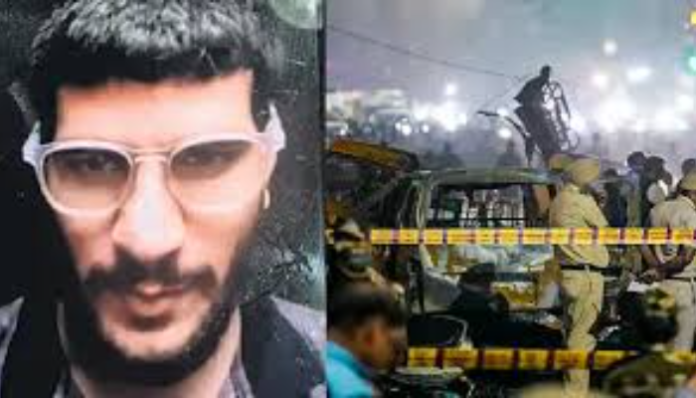The National Investigation Agency (NIA), which is investigating the Red Fort blast, suspects that Dr Umar un Nabi, the suicide bomber, concealed the bomb trigger in his shoe and carried out the explosion as a “shoe bomber”. White collar Islamic terrorist Dr Umar un Nabi was a member of the Pakistani terrorist group Jaish e Mohammad.
According to reports, the fragments of a shoe containing metal were discovered in his destroyed i20 vehicle. These fragments were located beneath the driver’s seat, specifically from the right front tire of the car. Traces of triacetone triperoxide (TATP), a substance commonly used in making bombs, were also found at the scene.
According to sources within the NIA, a severed foot uncovered among the wreckage of the vehicle involved in the attack implies that the terrorist who was driving it concealed the triggering device within his shoe. A metallic material was spotted in the shoe which seems to have been utilised to execute the explosion. Current investigations suggest that remnants of TATP have also been located in tyres and shoes at the site.
Furthermore, it has been verified that the terrorists had amassed significant amounts of TATP to orchestrate a massive explosion. Investigations conducted at the place in front of the Red Fort have disclosed that TATP explosives were employed with ammonium nitrate.
Likewise, it has been confirmed that 20 lakh rupees intended for the Delhi blast conspiracy were provided to the module via the apprehended female Dr Shaheen Saeed. Additionally, evidence of explosives has been located beneath the rear seat of the vehicle.
The inquiry uncovered that the incident exhibited a pattern akin to that observed on an American Airlines flight in December 2001. During that incident, a “shoe bomber” named Richard Reid tried to set off a bomb concealed in shoes filled with TATP, but was caught before he could succeed.
Umar similarly attempted to detonate a bomb and security agencies report that they have gathered substantial evidence and more members of this terror network may be revealed in the near future.
Investigations have disclosed that the planning for the explosion commenced on 2nd October and concluded on 28th October. Seven pre-owned mobile phones acquired from Nepal were utilised in the execution of the Red Fort explosion. A total of 17 SIM cards were employed, six of which were obtained from Kanpur. Two of these SIM cards were traced back to Beconganj IDs, prompting security agencies to take action.
Three 9mm cartridges and a single spent shell were found in proximity to the explosion site. These cartridges are not for civilian use and are not available for purchase, prompting inquiries regarding the events that transpired inside or near the vehicle just prior to the explosion.
According to sources, the recently apprehended “white-collar” terrorist cell, operated by a faction of radical medical professionals, had been on the lookout for a suicide bomber since the previous year. Umar Nabi, who was the architect of this plot, was aggressively advancing the plan. He was also seen glorifying suicide bombing in a video.
This suicide attack in Delhi on 10th November claimed the lives of fifteen people and injured numerous others as the interstate Jaish-e-Mohammed (JeM) module was exposed after 2900 kilogrammes of explosive material were previously found. This led to the arrest of several suspects, including Kashmiri doctors and the India chief of the women’s division of the terror group based in Pakistan.
On 14th November, explosive material that had been confiscated from Haryana and stored in a police station in Nowgam of Srinagar exploded, killing nine government employees and personnel as well as injuring twenty-nine others.

